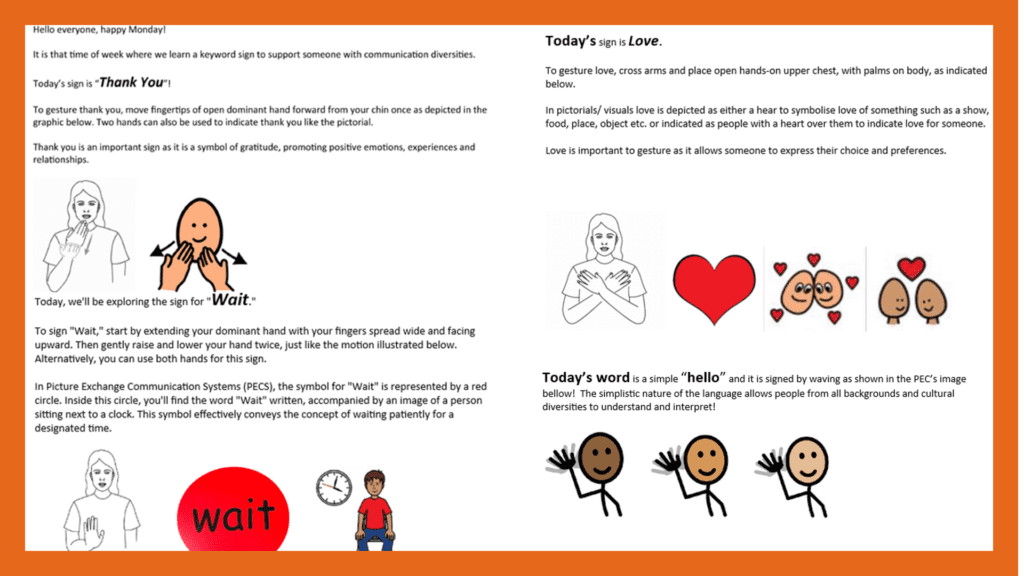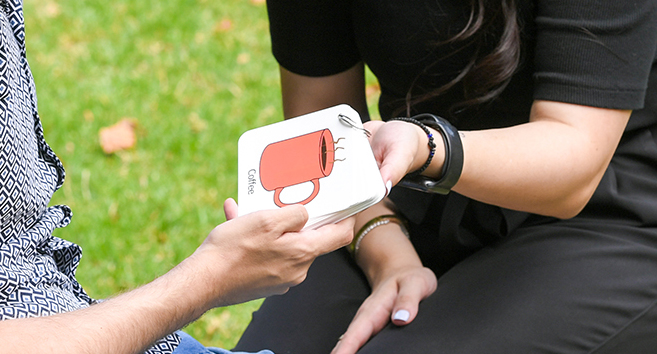Our internal programs are designed to tap into the unique skill set of our team, relating to access in the built environment
Imagine a world where you attempt to communicate, but nobody around you understands your chosen method of expression. Sadly, this is the daily reality for 1.2 million Australians grappling with communication disabilities.[1]
Since joining Architecture & Access earlier this year, Ilianna’s mission has been to foster a deep understanding within the team regarding individuals with communication disabilities, as well as those with intellectual and developmental disabilities. Her personal background, which includes living with a non-verbal sibling due to her intellectual disability, coupled with her experience as a support worker for individuals with neurodiversity, has provided her with invaluable insights into the diverse forms of communication and how they profoundly influence our experiences within physical spaces.
Ilianna is currently in the final year of her PhD studies at Monash University, where her research endeavours to establish a set of design guidelines to enhance the inclusivity of individuals with intellectual disabilities in the design process and its outcomes. Consequently, her goal is to integrate these concepts into the realm of access consulting and spatial accessibility.
Ilianna explains, to truly comprehend communication access, it is imperative that we first delve into understanding the unique needs of the users. It’s essential to recognize that not everyone employing non-verbal forms of communication possesses an intellectual or developmental disability. Nevertheless, my research maintains a specific focus on individuals with severe intellectual disabilities who utilize non-verbal communication due to their diverse cognitive abilities. Collaborating closely with my sister and non-verbal communicators, I’ve had the privilege of learning a form of communication known as “key word signs.”
Key word signs represent an alternative and augmentative communication (AAC) approach, using specific gestures to convey the core elements of a sentence, thus conveying the intended message. These gestures are not employed in isolation; rather, they are complemented by verbal cues and facial expressions, enabling easier interpretation of the intended message.[1]
Each Monday, our team gets an email that introduces us to a new and meaningful gesture to learn. These gestures encompass expressions like “hello,” “finished,” “thank you,” “please,” “sorry,” “happy,” “sad,” and many more. These emails not only include a description of the gestures but also provide illustrative visuals to illustrate both the physical gesture and the visual context when using it in communication.

By delving into various forms of communication, we are actively fostering a more inclusive community. This ongoing process enables us to connect with a broader range of individuals, making our interactions and engagement more diverse and accessible.
Ilianna looks forward to the day when everyone considers the cognitive and communicative requirements of individuals who communicate non-verbally. “In my recent experiences, I’ve started to witness landscape architects and designers incorporating communication boards into the design of playgrounds and utilising them to indicate directions or offer assistance. This promising trend signifies a positive step toward a more inclusive and accommodating approach to design and accessibility”, observes Ilianna.
Reference List
“Key Word Sign Australia.” Accessed November 8, 2023. https://kwsa.org.au/.
Statistics, c=AU; o=Commonwealth of Australia; ou=Australian Bureau of. “Main Features – Australians Living with Communication Disability.” c=AU; o=Commonwealth of Australia; ou=Australian Bureau of Statistics, November 29, 2017. https://www.abs.gov.au/AUSSTATS/abs@.nsf/Lookup/4430.0Main+Features872015?OpenDocument#Anchor3.
[1] Statistics, “Main Features – Australians Living with Communication Disability.”
